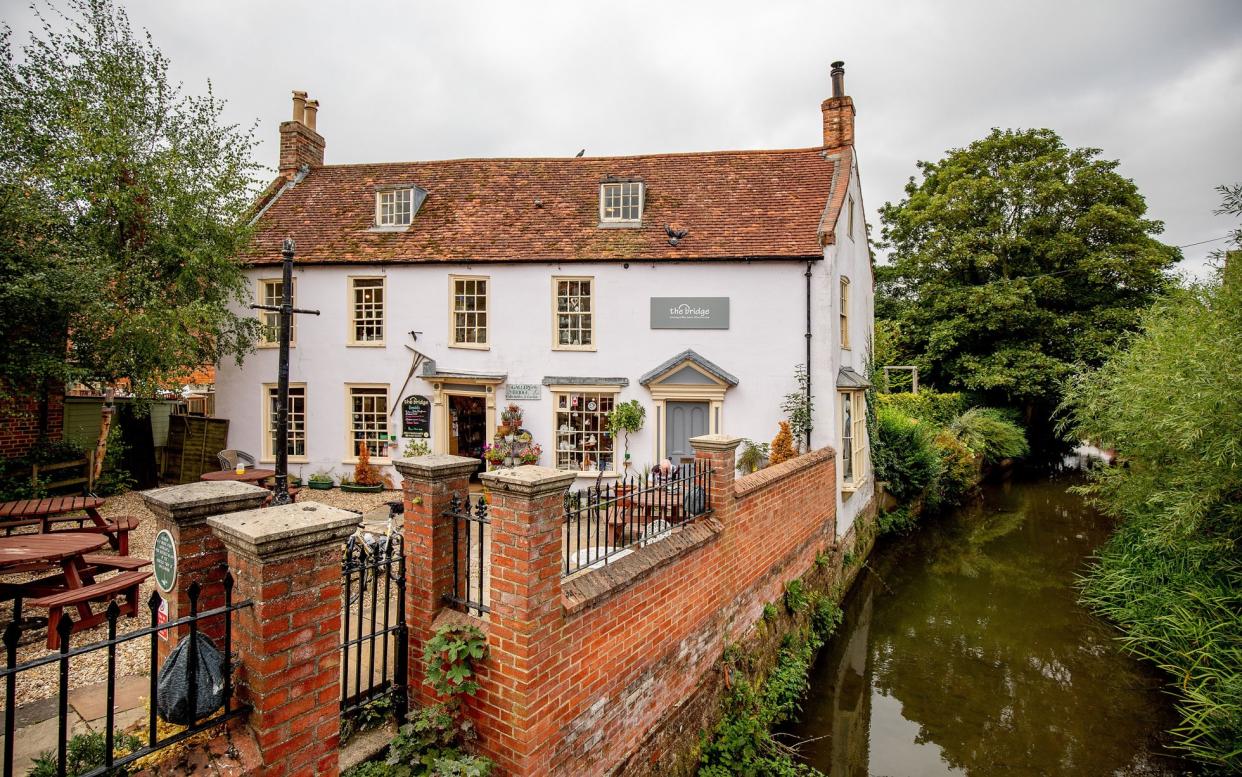Cake and camels in England's wettest town

A drizzly day down a lane in Lincolnshire and a camel rears into view; one large hump sheltering under a gazebo set back from the road. We must both be wondering what we did wrong to end up here; he thousands of miles from the desert, me a long way from the nearest railway station. For those without a car, Horncastle can be a bit of a trek; the buses are rural-irregular and all the taxis appear to have fallen into a chasm.
This market town of six-thousand-odd inhabitants has been isolated for some time. Originally Roman – a section of wall is on display in the library – Horncastle (Roman name unknown) was not on any important Roman roads. How did people get here? Some suggest that the river Bain, which runs through it, was the main route of access. On this biblically wet afternoon I can well believe it as I patter up roads that seem to surge and swirl beneath me.
Yet while I have struggled to reach the sleepy town, a mere 17 miles from Lincoln, just south of the Lincolnshire Wolds, an ark’s worth of exotic animals have found their way here.
Horncastle found itself in the news last month when local scrap metal dealer Andrew Riddel’s attempt to turn his private collection of 235 wild animals into a zoo was objected to by property developers, who wanted to build 80 homes in the adjoining field.
What began as a hobby for Riddel has become a boatload of non-indigenous fauna, including rescue lions Lorenzo and Mouse, glimpses of which can be spied from the road.
Until then, Horncastle was noted best for its preponderance of antique and collectable shops. The collective noun for them could be a Horncastle, so densely packed are they here.
Perhaps the collecting bug is in the water, which is still chucking it down as I take cover in The Bridge tea room. Horncastle, known to the Saxons as Hyrnecastre, is susceptible to flooding. In October 1960 the town broke the rainfall records with a foot and a half in three hours. I feel hopeful my visit might coincide with a new record.
Not to say that Horncastle isn’t pleasant. I’m certain that in more clement weather, perhaps on either Thursday and Saturday market day, the pretty square with a memorial to MP Edward Stanhope comes alive. It would certainly be charming to sit outside the Bridge café, next to the river. But I have little choice but to cosy up inside and tuck into homemade soup of the day and warm bread as I listen to the chitter-chatter.
News of the incipient Wolds Wildlife Park is on local lips. No simple-minded Nimbys, Horncastlians are rooting for Riddel. A recent open day sold 2,000 tickets and underlined the positive impact a wildlife park on the doorstep might have, with extra footfall of the biped kind appreciated by the town’s tea rooms and pubs.
Everyone seems amused by Riddel’s antics, praising him for rescuing the animals and looking after them well. A sense of humour seems to be essential Horncastle ware; comedian Robert Webb went to school locally, while Tennyson, born six miles away, quipped that, “Of all horrors, a little country town seems to me to be the greatest”.
A few monkeys would certainly spice the place up.
Fine reasons to visit Horncastle
The lunch spot
The Bridge café, housed in a charming 17th-century building, serves hearty homemade food in a picturesque setting. The cakes are baked on site by owner Barry Jenkinson.

The museum
The Sir Joseph Banks Centre celebrates the life of the naturalist and botanist, who found fame on a 1766 expedition to Newfoundland and Labrador and took part in Captain James Cook’s first great voyage. Horncastle is a few miles from Banks’s Revesby estate, and he was the town’s lord of the manor.
The church
It is thought a Roman church once stood on the site of St Mary’s. The 13th-century building was heavily restored by architect Ewan Christian between 1859 and 1861. Local folklore has linked the appointment of new vicars with major floods.
The antiques shops
Longtime resident Clare Boam owns three antique shops in Horncastle; Great Expectations, the Trinity Centre and the Old Co-op on North Street, which has Chester the cockatoo acting as security behind the counter.
The pub
The King’s Head is known locally as the Thatch and is a picture- postcard boozer. A public house for many centuries, in summer the exterior bursts with flowers. On a rainy day, take shelter in the low-ceilinged nooks with warming fires.
The bookshop
Pick up interesting editions of much-loved classics at Good For Books. This quirky second-hand shop also serves tea, coffee and home-made cakes for a very agreeable browsing experience. Open Thursdays, Fridays and Saturdays and by appointment.
The walk
Other than walking down to Hemingby Lane to check out the wildlife, the Coronation Walk along the banks of the river Waring tells the story of Horncastle from early Roman times to the days of the Industrial Revolution.

